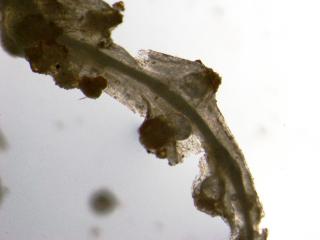Control
Chemical
Nematicides available to the home gardener come in granulated form and are highly toxic. While they will reduce nematode numbers they will not kill them all. Most gardeners would not choose a nematicide for home use, so it is important to prevent the introduction of plant-parasitic nematodes, or to maintain low nematode levels and reduce the damage caused to plants.
Cultural
There are a number of cultural practices which can be used should nematodes become a problem. These practices are aimed at reducing the nematode population by cutting off their food supply, disturbing their breeding ground and changing their habitat.
Crop rotation
By rotating the most susceptible crops, like tomato, bean, capsicum, carrot, and eggplant, with less susceptible crops, like globe or Jerusalem artichoke, asparagus, sweet corn, broccoli, Brussels sprouts and mustard, nematode populations in the soil can be reduced to levels that will be less damaging to subsequent plants grown in the same area. Plants of the same family and root crops should be avoided in consecutive years. Many nematode-resistant plant varieties are now available. Check seed catalogues for resistant varieties.
Relocation
Relocation of your garden may be an easy solution, provided space is available. An alternative may be to grow plants in containers. Be aware that moving the garden to a new site does not ensure complete escape from plant-parasitic nematodes: they may be present in previously unplanted areas because they can also survive on the roots of certain weeds and woody plants. Do not continue to grow plants susceptible to nematodes in an area with a history of nematode problems.
Early-season cropping
Some vegetables (lettuce, onion, radish, leafy greens, green pea, bean, or brassicas) can be planted early and escape serious nematode damage. These plants grow when temperatures are cooler, and nematode reproduction and activity are reduced. These plants are also harvested before nematode damage becomes serious. Nematode damage can be most severe in late-season plantings.
Root destruction
As nematodes continue to feed on and reproduce in root fragments in the soil, it is a good move to destroy and remove the crop roots as soon as the plants are harvested. This should diminish the population before the next crop is planted.

